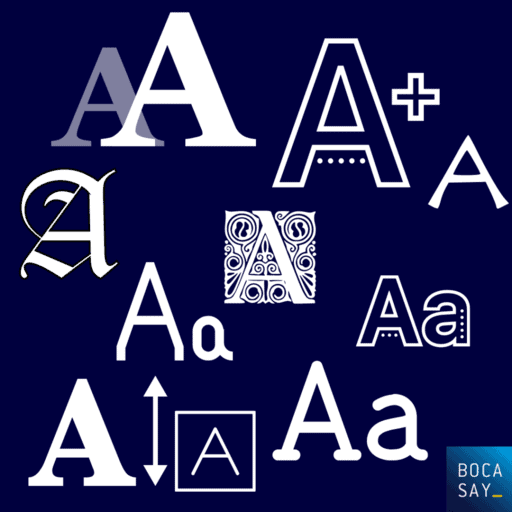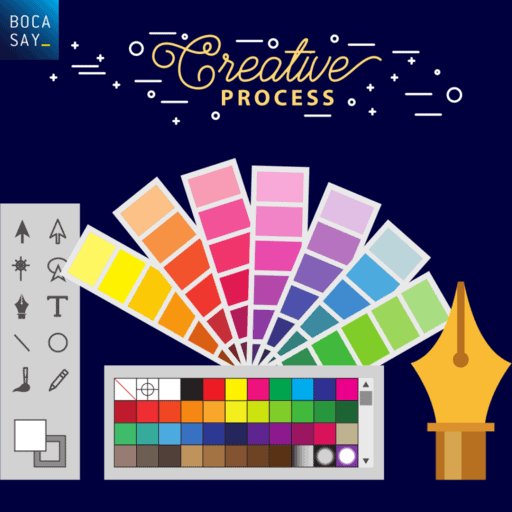How to Choose the Best Fonts for your Online Business
Fonts play a crucial role in establishing an online brand’s visual identity. In a highly competitive online market, the following cannot be repeated enough: first impressions really do matter.
Attracting your target customers, establishing brand awareness and being successful in e-commerce, will require solid visual choices that make your brand stand out from competitors.

Even if you run a small online business, you can avoid appearing amateurish and unprofessional by taking the time to choose fonts that can best communicate your brand’s intended message.
This is why online businesses can benefit from learning about some of the basics of typography, basically the art and technique of making writing legible, readable and aesthetically appealing.
In this article, we’ll explore how font choices can impact online business performance, as well as present the essential rules of font selection for e-commerce.
Why are fonts important for online businesses?
First, it’s important to consider that just like your website’s content, layout and image selections – the font you choose for presenting your company’s text will also communicate a particular message.
It’s widely known that a lot of successful marketing is not based on what you say, but rather on how you say it. That means that the way a message is communicated, can impact the quality of the message itself.
Second, you should list your brand’s unique characteristics and advantages, and try to communicate these aspects to your clients through all of your brand’s design decisions, including fonts.
For example, if you want to run a creative, innovative, trendy and contemporary online advertising agency, then your fonts absolutely need to express these characteristics to your clients.
Basic Font Types
In order to better understand the communication impact of fonts, it’s also important to familiarize yourself with the two most basic types of fonts: serif and sans serif.
Serif fonts:
Typefaces that use serifs – extra strokes on the ends of their letterforms which can portray feelings of history, tradition and integrity. Popular examples of serif fonts include the Times New Roman and Georgia fonts.
Sans Serif fonts:
Typefaces with a clean and orderly appearance that do not use decorative serifs on the ends of their letterforms. Characterized by simplicity and elegance, common sans serif fonts include Arial and Helvetica.
Which Font Type is Better?
Wondering about the pros and cons of each font type? Generally speaking, serif fonts are considered to evoke a more formal and classic mood, while sans serif fonts are viewed as more casual and minimalist. It is not uncommon for books and magazines to use serif fonts and for digital publications to use sans serif fonts.
As far as legibility is concerned, some believe that serif fonts are better for reading text at small sizes in print mediums, and that sans serif fonts are ideal for reading in digital environments. However, recent advancements in retina computer displays and graphic resolutions have drastically improved most digital font legibility.
🌍 Do you have an IT development project that could benefit from better design? At Bocasay, our dedicated teams of developers enable large companies around the world to benefit from sophisticated IT solutions. Please contact us to find out how we can help you with your next project 🌍
Find Your Custom Requirements
Before choosing appropriate fonts for e-commerce, online businesses and entrepreneurs should ask themselves the following questions:
→Who are my ideal online customers?
→What makes my brand or company unique?
→What is the best font to use for my company’s logo?
→What is the best font to use for business documents?
→What is the best font for an online business website?
→What types of fonts are the most professional?
→Which font is the most aesthetically pleasing?
The Essential Rules of Font Selection for E-commerce

Simplicity:
Always aim to keep things simple. While there are thousands of available fonts, both free and for purchase, more fonts doesn’t mean better online business performance. When making important design decisions for your brand’s website or mobile application, you should never include more than 3 different fonts. In fact, using anything beyond two different font types can result in your brand appearing messy, mismatched and unprofessional. By choosing one or two fonts to represent your brand online, you can simplify your design process and make sure that your company’s text presentation is not distracting for your readers.
Brand Identity:
The choice of font should always reflect your online brand’s identity and at the same time express its core values to its target customer audience. Even if you have the most well-written content, it’s completely pointless if it is delivered in a font that contradicts your brand’s intended tone, mood, style etc. For example, a five-star hotel website may use an elaborate, traditional-looking font to further enhance the marketing of a sophisticated location. Similarly, an online business selling childrens’ toys, may use bright colors and large cartoon letter fonts in order to communicate youth, playfulness and happiness.
Readability:
Always make it easy for the reader. If people can’t easily read the text on your brand’s website or app because of the limited legibility of the fonts you chose, then you are wasting time, resources, and ultimately customers. Font style, size and color should all be balanced to ensure maximum user readability. In addition, whatever font you choose for your brand’s digital environments, it most likely needs to be legible and compatible across multiple devices such as desktops, smartphones and tablets. Choose a font that looks and reads well across the devices your target audience is most likely using.
Exploration:
With countless font options available, it’s important to keep an open mind and to take the time to explore what works best for your online business. For higher budgets, there are dedicated designers and typographers who can work alongside marketing teams in order to develop unique company fonts from scratch – specifically designed according to your brand’s identity. Alternatively, web font services like Google Fonts, Fontshop and Adobe Fonts, offer a wide range of free and open-source web fonts – designed to load fast and to provide reliable digital readability across many platforms and devices.